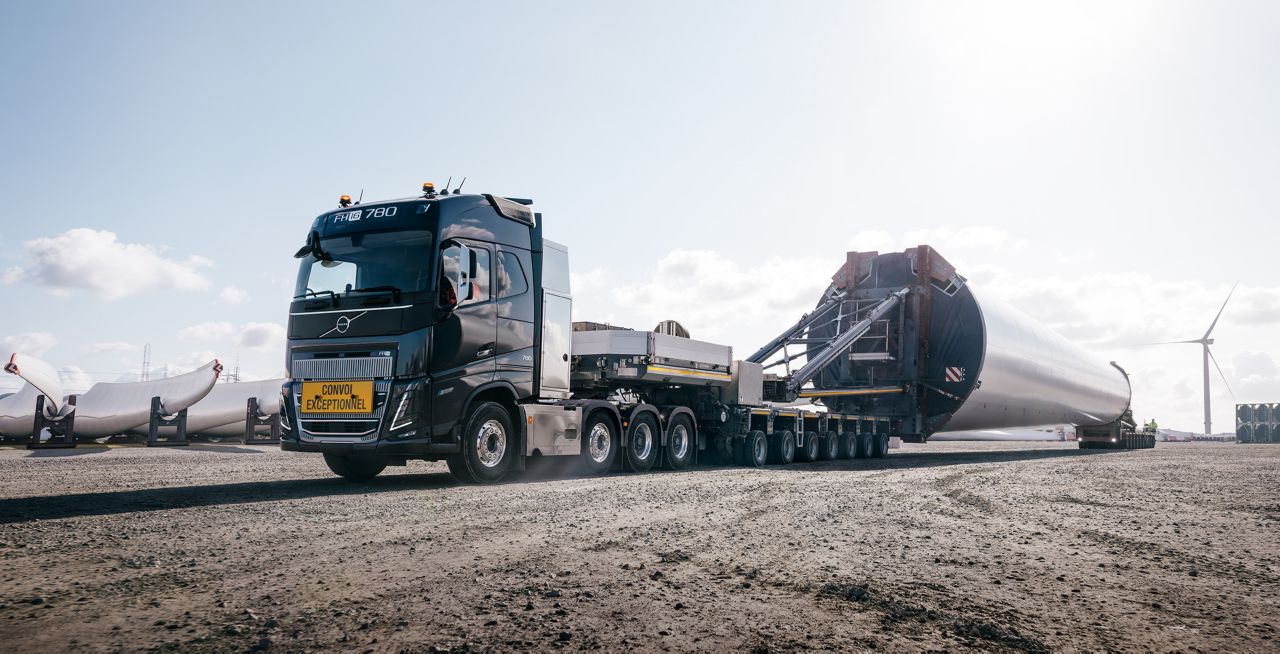The wider the driver’s field of vision, the safer it is for both the driver and other road users. This is why maximizing driver visibility is a core objective in developing Volvo’s new truck cabs.
There are multiple ways driver visibility can be improved, including better cab design, larger windows and visual aids such as mirrors and cameras. Active safety systems and driver warnings also play a key role in letting drivers know when a potential hazard is in their vehicle’s vicinity.
What’s the difference between direct vs. indirect vision?
Direct vision refers to what can be seen in one’s direct line of sight. Indirect vision, on the other hand, is what can be seen via other instruments: namely mirrors and cameras.
“As a general rule, direct vision is preferable to indirect,” says Anna Wrige Berling, Traffic & Product Safety Director, Volvo Trucks. “This is because direct vision is more intuitive in terms of where the driver should look. However, indirect vision is also important and can visualize areas that cannot be seen via direct methods. Ultimately, it’s about obtaining an optimal balance between the two to achieve the broadest possible field of vision.”
There is much potential in cameras and support systems. They improve visibility and highlight risk areas and they can also assist in directing the driver’s attention to where it is needed the most.”
How low entry cabs enhance direct visibility
One effective way of maximizing direct visibility for the driver in urban areas is to use a low entry cab. By bringing the driver down to eye-level with their surroundings, they are in a far better position to see pedestrians, cyclists and other vehicles.
Earlier this year, Volvo Trucks added the new Volvo FM Low Entry to its range of low entry models. Since it is an electric vehicle, the absence of a diesel engine enables the driver’s position to be moved downs and forward. The result is exceptional suited for both urban transportation and regional haulage. The Volvo FM Low Entry is also one of the few vehicles to achieve a five-star rating under the London Direct Vision Standard*.
In addition, updates have been made to the Volvo FE Low Entry Cab, which now features new, slimmer side mirrors that improve direct visibility by up to 10%. Both models can also be fitted with extra door windows on the passenger side.
What are the benefits of using cameras to enhance visibility?
In general, cameras can cover areas around the truck that cannot be seen either directly or via mirrors. More recently, they can also replace some of the mirrors and offer superior visibility. For example, one of the latest features from Volvo Trucks is its new Camera Monitor System which can replace side mirrors on the Volvo FH, Volvo FM and Volvo FMX. By doing so, it improves direct visibility to the vehicle’s sides, which is beneficial at intersections and roundabouts. In addition, the Camera Monitor System also has infrared capability and night vision, which ensures superior visibility compared to conventional mirrors when driving in the dark. It can even be activated when the vehicle is stationary, which enhances the driver’s personal security when parked overnight.
By replacing side mirrors, the Camera Monitor System also enables Volvo Trucks to relocate its unique passenger corner camera higher up. This means even better views of the passenger side, which could prove invaluable for spotting pedestrians and cyclists, and navigating through crowded areas and narrow roads.
How warning systems contribute to safety
While not strictly improving visibility, active safety systems and driver warnings play a key role in making the drivers more aware of their surroundings and help direct their attention to potential hazards.
For example, Door Opening Warning is designed to alert a driver of passing cyclists and pedestrians before opening the cab doors. Front Short Range Assist looks for pedestrians and cyclists in front of the truck at low speeds and Side Collision Avoidance Support is designed to detect other vehicles when changing lanes as well as pedestrians and cyclists on either side of the vehicle.
“As a driver, you need to be looking at so many different things at once, so it isn’t always that they cannot see, but that they are not looking in the right direction at the right time,” says Anna. “There is much potential in cameras and support systems. They improve visibility and highlight risk areas and they can also assist in directing the driver’s attention to where it is needed the most.”
* The London Direct Vision Standard was introduced in 2021 and applies to what a driver can see directly from their cab (excluding mirrors and cameras). To qualify for a permit to drive in Greater London without making any truck modifications, all heavy-duty vehicles entering Greater London are required to have at least a one-star rating under the standards, which will be raised to three-stars in October 2024. Both the Volvo FM Low Entry and Volvo FE Low Entry Cab can be specified to reach a five-star rating.
To learn more about the challenges of truck visibility in urban traffic, you can read the following article, which discusses:
- How urbanization and e-commerce are making the issue of truck safety more acute.
- Why governments and traffic authorities are focusing more on making truck driving in cities safer.
- How trucks are being adapted to help improve safety on urban streets.


